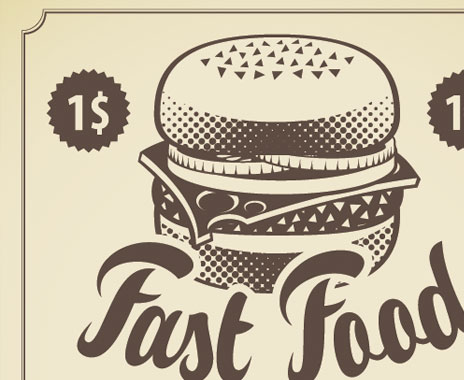Q: Other restaurants seem to be moving away from 99-cent-and-under value menus. So what is the right discounting strategy?
A: True, McDonald's has replaced its Value Menu with the Dollar Menu & More, and Wendy's 99 Cent Menu has been reconceived as the Right Price Right Size menu. But that doesn't mean the category has forsaken discounts as its primary traffic-driving tactic.
Taco Bell introduced a $1 Cravings menu in many markets. Subway was offering $2 subs for its “Customer Appreciation Month” last December. And my email inbox and Sunday papers remain filled with coupons from fast-food chains.
In fact, I came across an article that started out with the declaration, “Faced with a crowded market and flat sales, the fast-food industry is locked in a price war that few in the burger business want to acknowledge.” Given how well this seemed to describe the current state of fast food, I was surprised to find it was a piece written back in 1989. It seems we find ourselves today in a situation uncannily similar to those value menu heydays. As Yogi Berra said, “It’s like déjà vu all over again.”
If we want to avoid setting ourselves up for prolonged margin problems again, we need to rethink discounting. We need to unplug from our preoccupation with customers who want deals and look with a more sober eye at the role of discounts in purchasing decisions. A low price may attract attention, but it dilutes the perception of quality and value. Did anyone who saw J. C. Penney’s offer of $1.97 jeans last Christmas think those items would be made of quality materials and fashionable designs? In fast food, we’ve brought the judgment on ourselves by spotlighting our lowest-priced products as the “value menu.” We’ve equated value with low prices when we should be shaping customers’ understanding of our complete value proposition.
On the flip side, higher prices may actually be more appealing. According to the market research firm Ipsos, nearly half of all Americans are willing to switch to a higher-priced brand if they perceive it to be of better quality. Higher prices convey higher quality and better value and lead people to esteem the brand. Think about how most people buy wine. After narrowing down their choices to the type of wine they want, they usually rely on price to help them select a bottle since they have little else to help ascertain the quality. Price serves as a cue in fast food as well, suggesting a product’s quality is either cheap or premium.
We’ve trained customers to buy only on discount. Discounting is an addictive downward spiral. The more we do it, the more people react to it, want it, and expect it. Given its constant sale ads, would you ever buy anything full-price at Jos. A. Bank? Or at Bed Bath & Beyond, whose 20 percent coupons can be found everywhere? In the same way, many restaurants have made it tough to implement full-price pricing strategies by consistently relying on price to introduce new products and drive traffic.
Trying to compete in the discount game is also rarely a winning proposition, particularly if you’re a smaller player trying to beat bigger competitors. The biggest players enjoy significant economies of scale, and it’s unrealistic to think they can be out-volumed. Even among similar competitors, an overreliance on deals always spurs a race to the bottom—a race that no brand wins.
So what’s the solution? Here are some ways to take a new approach to discounting.
Identify other strategies to boost perceived value. Better in-restaurant atmosphere, branded ingredients, and a well-designed visual identity are a few ways to convey a more premium positioning. Customization, mobile payment options, and faster service may also speak to some customers’ value sensibilities more strongly than a low price.
Conceive more creative promotions. Speaking about the need to think outside the price box, Bonnie Riggs of The NPD Group explained last year that, “considering current consumer sentiment and their continuing frugality, the deals that have historically appealed to restaurant customers need to be re-engineered and the next generation of deals introduced.” Instead of looking to discounts first, start with other incentives and benefits. Retailers often use exclusive access to products, non-cash rewards, and gifts with purchase to drive traffic. Perhaps we should borrow a page from their playbook.
Consider how you could charge more, not less. Given that higher prices can actually have a positive effect, you might want to consider a thoughtful price hike, or a new product introduction with a premium price. Think about what would you charge and why. Even if you decide not to go this route, the exercise of exploring these new possibilities might unleash creative ideas for improving your value perception and differentiating your offering.
Use discounting selectively and infrequently. Price remains a powerful element of the fast-food value equation, and discounting is not inherently a bad strategy. It’s our frequent and widespread use of discount prices that has become problematic. You can increase the attention-getting power and appeal of the discounts you do offer by making them the exception rather than the norm.
Resisting the urge to compete on price is a difficult path, but it’s often the road not taken that leads to greater gains.












